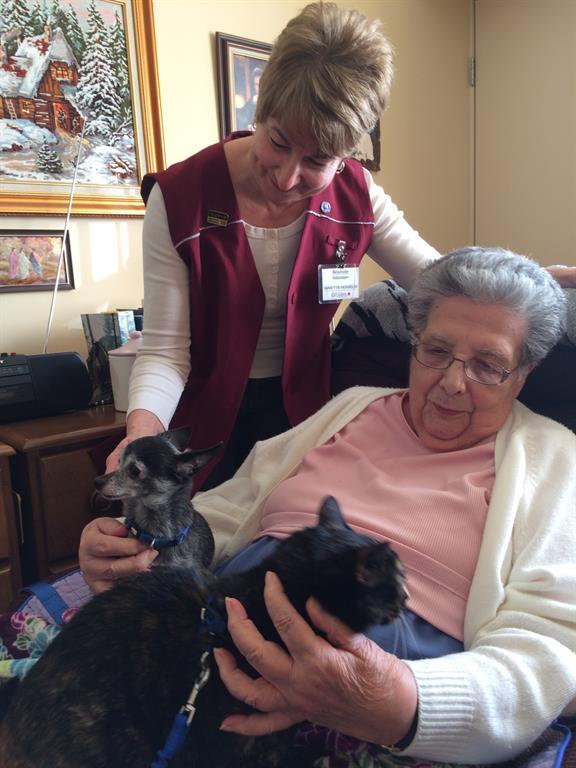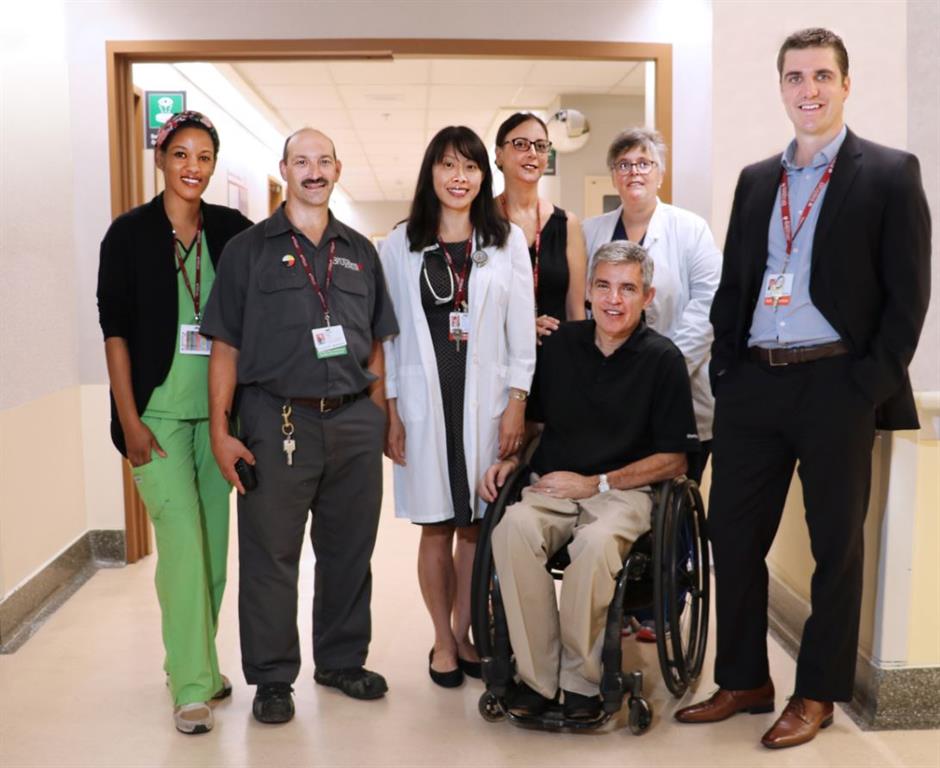Leading Practices
Bruyère’s Volunteer Unit Model

As the healthcare landscape shifts due to factors such as an aging population, increasing complex care needs, and rising costs and demands, organizations are looking for ways to manage expectations and maintain quality.
 Adapting to this environment, Bruyère has created the “volunteer unit model”, an innovative service delivery model designed to integrate volunteers more effectively into the healthcare team on the units. Recognized as a Leading Practice by the Health standards Organization in 2018, the model expands the role of volunteers which traditionally was limited to activities such as transporting patients, assisting in recreation activities, and making friendly visits to patients.
Adapting to this environment, Bruyère has created the “volunteer unit model”, an innovative service delivery model designed to integrate volunteers more effectively into the healthcare team on the units. Recognized as a Leading Practice by the Health standards Organization in 2018, the model expands the role of volunteers which traditionally was limited to activities such as transporting patients, assisting in recreation activities, and making friendly visits to patients.
“[Bruyère volunteers] filled the emptiness as much as possible with attention, beautiful smiles and loving support. They offered my father and my family an extraordinary respite. Often, if we felt we were abandoning my mother after a visit, we knew she would not be alone.” —Daughter of a Bruyère patient
The success of the model lies in the regularity and consistency it provides for the volunteers and the involvement of clinical and non-clinical staff. Being assigned to the same unit creates regularity and routine for volunteers and residents, leading to comfort, consistency and trust. Over time, volunteers on the unit get to know their residents well and can further customize services and respond to meet immediate needs. Volunteers also get to know the staff on the units and become fully integrated into the care team.
Upon arrival on the unit, volunteers conduct “Volunteer Rounds” which involves going from room to room to introduce themselves and ask about any special requests.
Throughout their shift, volunteers can assist with meals, facilitate small groups on the unit, provide one-on-one friendly visits, tidy rooms, help to organize the unit, answer call bells and respond to non-nursing related needs.

These are special touches that can impact quality of life in a significant way. “[Bruyère volunteers] filled the emptiness as much as possible with attention, beautiful smiles and loving support. They offered my father and my family an extraordinary respite. Often, if we felt we were abandoning my mother after a visit, we knew she would not be alone”, said the daughter of a Bruyère patient.
Volunteers also act as “Volunteer Ambassadors”. The ambassador greets new admissions, provides a tour and supports the integration of the patient or resident and their family on the unit. This initiative was awarded as a Leading Practice by Accreditation Canada in 2016.
They become a rich resource that expands our ability to reach more patients and residents and free up other staff to focus on the more clinically complex needs, ensuring
that the right person is at the bedside at the right time.
The volunteer unit model can be adapted to meet the requirements of any program, whether in a hospital or long-term care setting.

Bruyère offers specialized training to interested volunteers including palliative end-of-life care, spiritual care, music and memory, cycling without age and guided autobiography. Volunteers can then use their acquired knowledge and skills to enhance service delivery.
They become a rich resource that expands our ability to reach more patients and residents and free up other staff to focus on the more clinically complex needs, ensuring
that the right person is at the bedside at the right time.
The volunteer unit model can be adapted to meet the requirements of any program, whether in a hospital or long-term care setting.